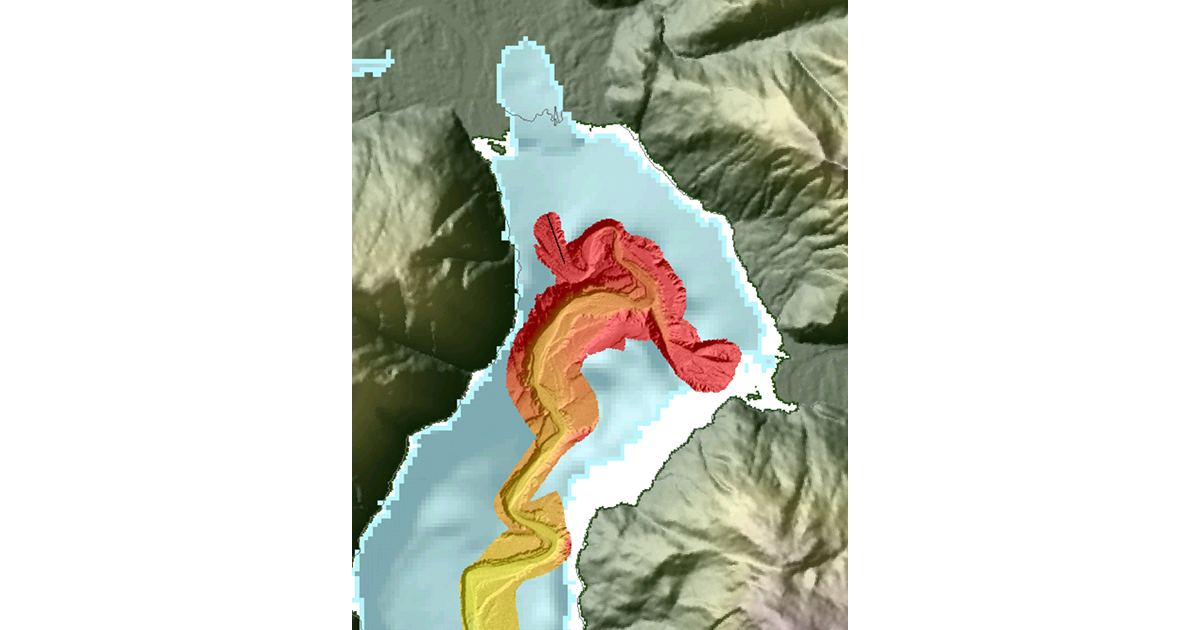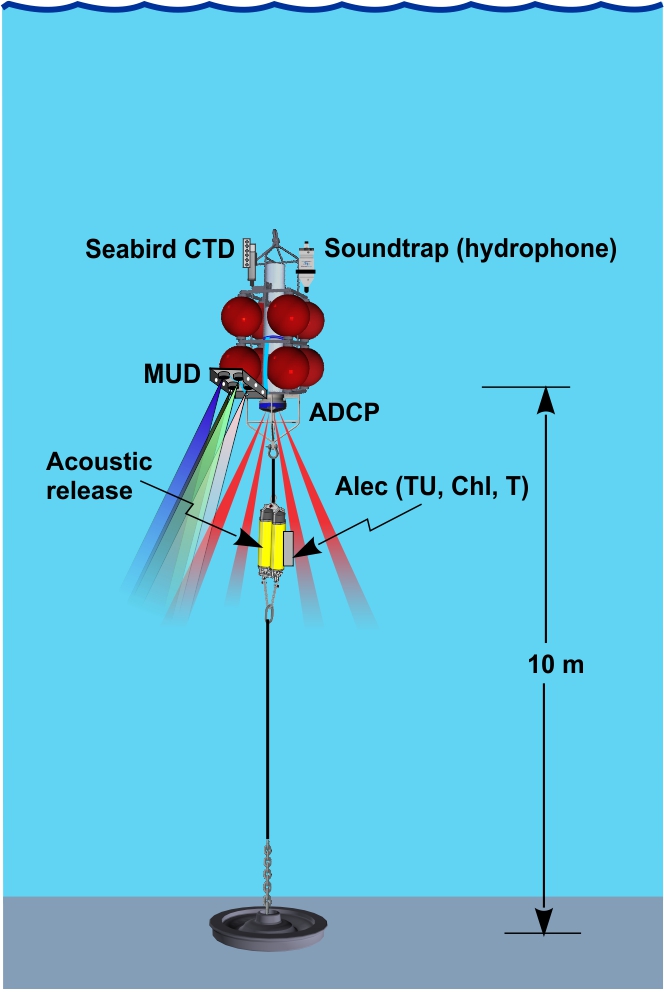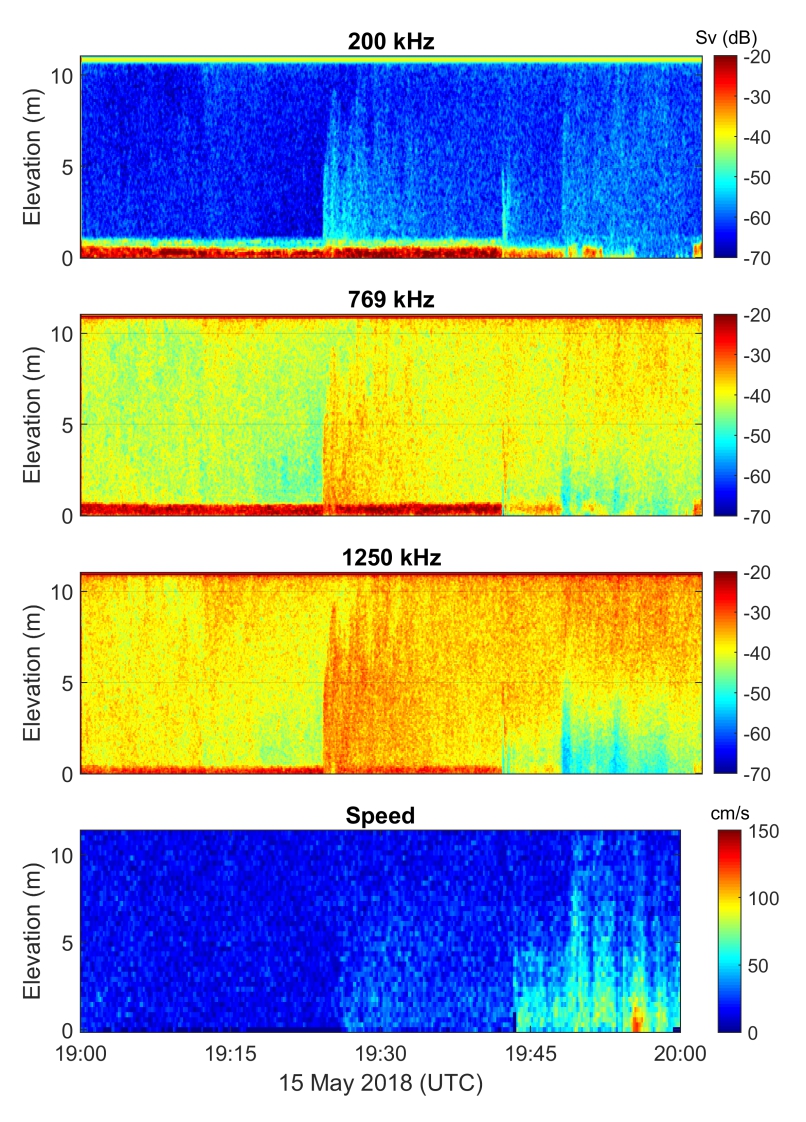MUD: The Next Generation in Acoustic Backscatter Measurements

A new tool to measure both sediment concentration and sediment size is being built by ASL Environmental Sciences Inc. (ASL).
 MUD deployment diagram showing mooring instruments
MUD deployment diagram showing mooring instruments
The Multifrquency Ultrasonic Device (MUD™) is based on ASL's successful Acoustic Zooplankton Fish Profiler (AZFP). The MUD and AZFP echosounders can be configured with up to four frequencies ranging from 38 kHz to 2 MHz. The MUD prototype is based on a set of higher frequencies (200 kHz, 769 kHz, 1.2 MHz and 2.0 MHz) that will allow for a broad range of particle size discrimination. While the AZFP is a high gain device for low scattering conditions and the greatest possible range, the MUD echosounder is a lower gain system that is being tuned to work in higher backscatter regimes such as the bottom or high concentrations of suspended sediment. ASL's echosounders are designed for autonomous deployments, with small size and low power draw.
 Acoustic backscatter echograms showing turbidity flow
Acoustic backscatter echograms showing turbidity flow
In May 2018, Dr. Gwyn Lintern of NRCan, in collaboration with university researchers, deployed a three frequency (200 kHz, 769 kHz, 1250 kHz) MUD in Bute Inlet, one of the principal inlets of the British Columbia coast. This site was selected due to its large number of seasonal turbidity flows. The timing of the deployment coincided with the spring freshet, a time where turbulent suspension of sediments was likely. On May 15th a turbidity flow event was detected by the MUD. All three frequencies clearly recorded the characteristics of the turbidity flow without saturating. These real world data, along with further in-situ and laboratory calibrations will provide a method to develop multifrequency inversion techniques to resolve sediment concentration.

